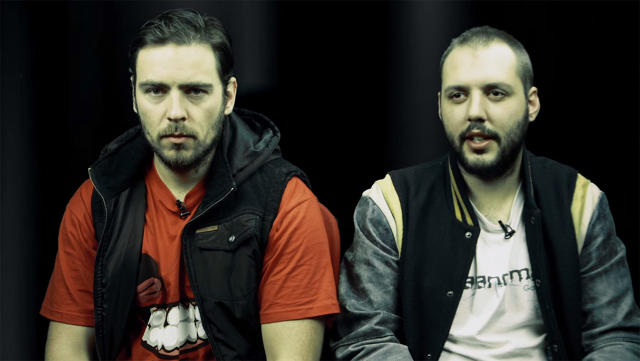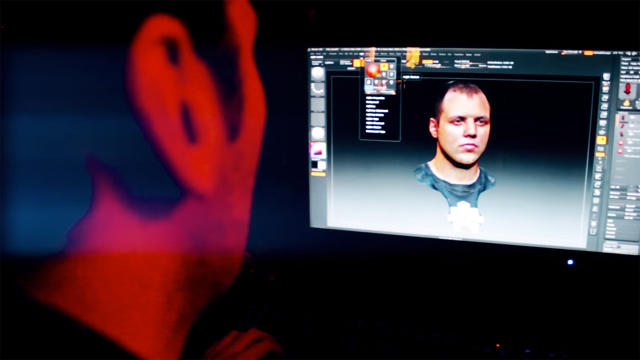An aerial view of Randall's and Wards Islands seen towards the bottom right.
Scattered around the five boroughs are a set of islands—Roosevelt Island, North Brother Island
, Randall’s Island and Wards Island, Rikers Island, and Hart Island— that have all been places
where the tired, poor, sick and criminal are sent to be treated (or sometimes just confined). These
are the Islands of the Undesirables. The water has served as a kind of moat, as well as insurance
against NIMBY protestations, physically close to glittering Manhattan but also very, very far the
cosmopolitan city.
This is the second installment of five-part series based on this past weekend’s Obscura Day event.
Yesterday was Roosevelt Island, today we look at Randall's Island and Wards Island. 
A map of the islands that are featured in Atlas Obscura
's Islands of the
Undesirables series
(Photo: Map Data © 2015 Google)
Until the 1960s, Randall’s and Wards were two distinct islands, with the stretch between them known
as Little Hell Gate. But even before Manhattan dumped its construction rubble to fill that gap, both
islands have long histories as drop-off points for unwanted items from the big city.
Orphans, people dying of smallpox, the criminally insane and juvenile delinquents all resided on this
slip of a place, less than a square mile in size. The land was deemed more suitable for the dead than
the living, as 100,000 bodies were transferred here at one point.
And if all of that wasn’t enough, eventually city planners built a sewage treatment plant on its shores.
At first, though, the islands lived bucolic lives. They were purchased from the Native Americans in
1637 by Dutch Governor Wouter Van Twiller and used primarily for farming, with Wards known
as “Great Barn Island” and Randall's as “Little Barn”. Randall's earned its first undesirable
association in the spring of 1776, when George Washington established a smallpox quarantine there,
but that usage didn’t last long—the British drove the Americans from both Great Barn and Little Barn
a few months later. Captain John Montresor, prominent in the British military, had bought Little Barn
in 1772 and used it to secretly survey New York for invasion sites. During the Revolution, he set up
an officer's hospital on the island, while the British used it to launch
amphibious invasions.
Great
Barn, meanwhile, became an army base.

The Inebriate Asyulm on Ward's Islabd,1869
Like the other “islands of the undesirables,” both Randall’s and Wards were then privately owned
until the city bought them in the 19
th century (Randall’s in 1835,
Wards in 1851). Randall’s used
to be owned by a farmer named Jonathan Randel, and the current name comes from a spelling error
by the city. In the 19
th century, the island housed an orphanage, an almshouse, a potters field, an
Idiot Asylum (yes, its actual name) and a children’s hospital. But its most notorious tenant was
the House of Refuge, a reform school completed in 1854 and run by the Society for the Reformation
of Juvenile Delinquents.

The House of Refuge—in reality, it was anything but—housed in both
actual criminals and street
urchins by the hundreds, and both groups were largely comprised of Irish teenage boys. The children
spent four hours a day in religious and secular classes, and six and a half hours caning chairs and
making shoes for outside contractors. Children who misbehaved were hung up by their thumbs.
In 1887, business finally forced the state to stop using House of Refuge inmates as workers
(perhaps because the streets of New York were already flooded with cheap immigrant labor)
and conditions improved slightly, though there were still reports of inhuman treatment by drunken
officers and armed revolts by the boys.
During the same time period, Ward Island (its name comes from former owners Jaspar and
Bartholomew Ward) was used for burial of hundreds of thousands of bodies relocated from the
Madison Square Park and Bryant Park potters fields, beginning in the 1840s. Overall, 100,000
bodies were moved to approximately
75 acres on the southern tip of Wards Island. (It’s unclear
whether the bodies are still there.) Besides the burial of the indigent dead, the island was also the
site of a hospital for sick and destitute immigrants, known as The State Emigrant Refuge
(
the biggest hospital complex in the world during the 1850s). Other tenants included an immigration
station, a homeopathic hospital, a rest home for Civil War veterans, an Inebriate Asylum, and The
New York City Asylum for the Insane.

In 1930, the Metropolitan Conference on Parks recommends that the islands be stripped of their
institutions and used only for recreation. Parks Commissioner Robert Moses saw both islands as
key to his plan to link Manhattan, the Bronx and Queens by bridge, providing access to his new
system of parkways on Long Island. He pushed a bill through the state legislature that forced out
the House of Refuge and many of the other institutions, sending many of the patients and inmates
to overcrowded facilities elsewhere. Since then, the islands have had a different feel.
A 21,000-seat stadium (known as Triborough and later Downing) was constructed, opening with
Olympic trials in 1936. The trials were a mess, thanks largely to a malfunctioning public address
system, but they did feature Jesse Owens earning his Olympic slots. Two years later, Downing
Stadium also hosted what is considered the first outdoor jazz festival, the 1938 Carnival of Swing.
The 5-hour, 45 minute memorial for George Gerwshin starred Duke Ellington, Count Basie and
other jazz legends. Newsreel footage of the event on
YouTube provides a glimpse back in time to
what seems like a marvelous event, and a far cry from the island’s historical uses.
Randall’s want on to host other major concerts and events, including Lollapalooza for several years
in the 1990s. In 2005, Downing Stadium was replaced by a $45 million track and field arena called
Icahn Stadium, and the island is now also home to a golf center, tennis academy, and athletic fields.
It’s also home, at least this year, to the Frieze Art Fair, the Governor’s Ball, and several other
music-and-art festivals.
These days, then, the vibe at Randall’s and Ward is much different than for most of the last century,
although remnants of its dark past remain. The New York City Asylum for the Insane later became
the world’s largest mental institution and is now the
Manhattan Psychiatric Center, still located on
the island. The Kirby Forensic Psychiatric Center is also on Wards, housing the criminally insane.
Wards is also home to a major sewage treatment center, which takes up about a quarter of the island,
and several homeless shelters, some of which are “emergency” shelters that have nevertheless been
there for decades.
But the island is now known for something quite unique: a NYC Fire Department training academy
packed with structures simulating the various environments that firefighters encounter within the city,
including a subway tunnel (complete with tracks and two subway cars), a helicopter pad, and a
replica ship. The danger there is carefully controlled—unlike the state-built institutions that had
previously lived on the island.

Aerial view of the Hell Gate Bridge and one span of the Triborough Bridge,
between Astoria Park
in Queens and Wards Island. At the top of the photo is the pedestrian Wards
Island Bridge














